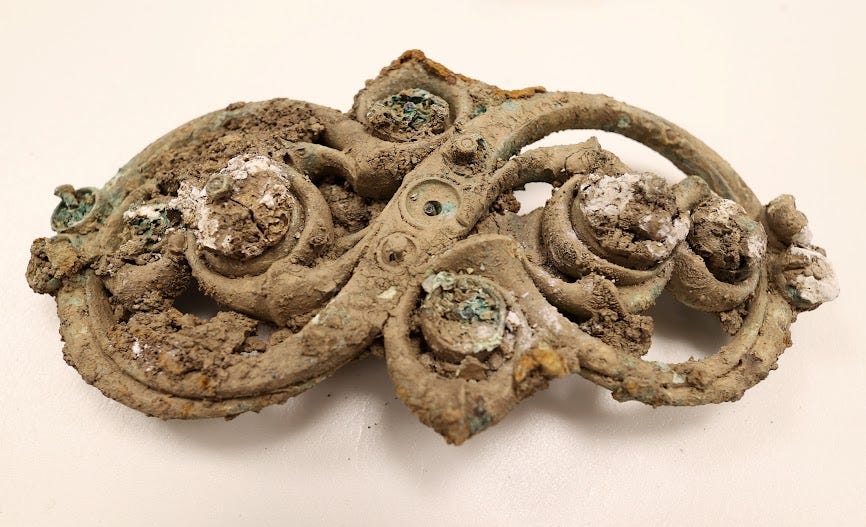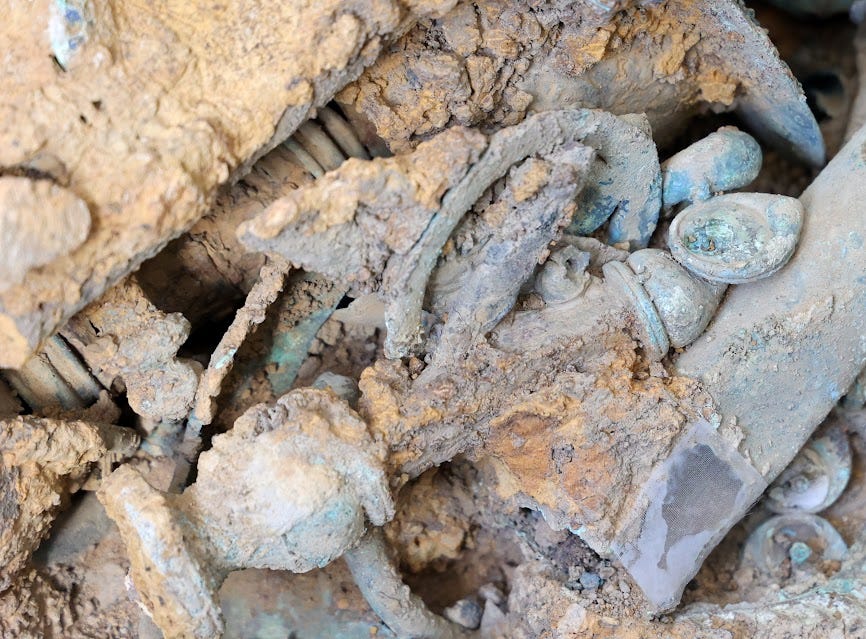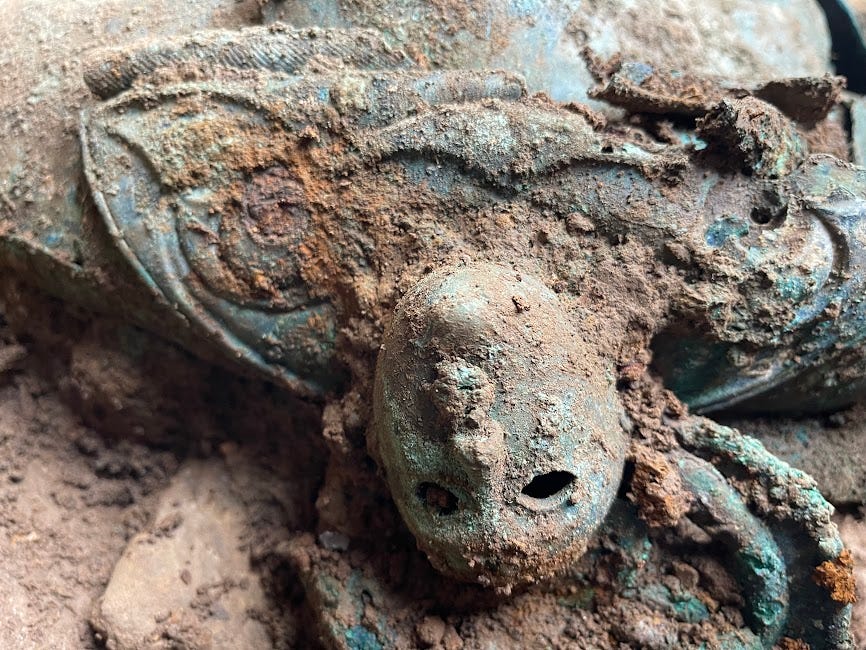'An incredible once in a lifetime archaeological find'
Huge 800-object hoard reveals Iron Age life in the North. Tony Henderson reports
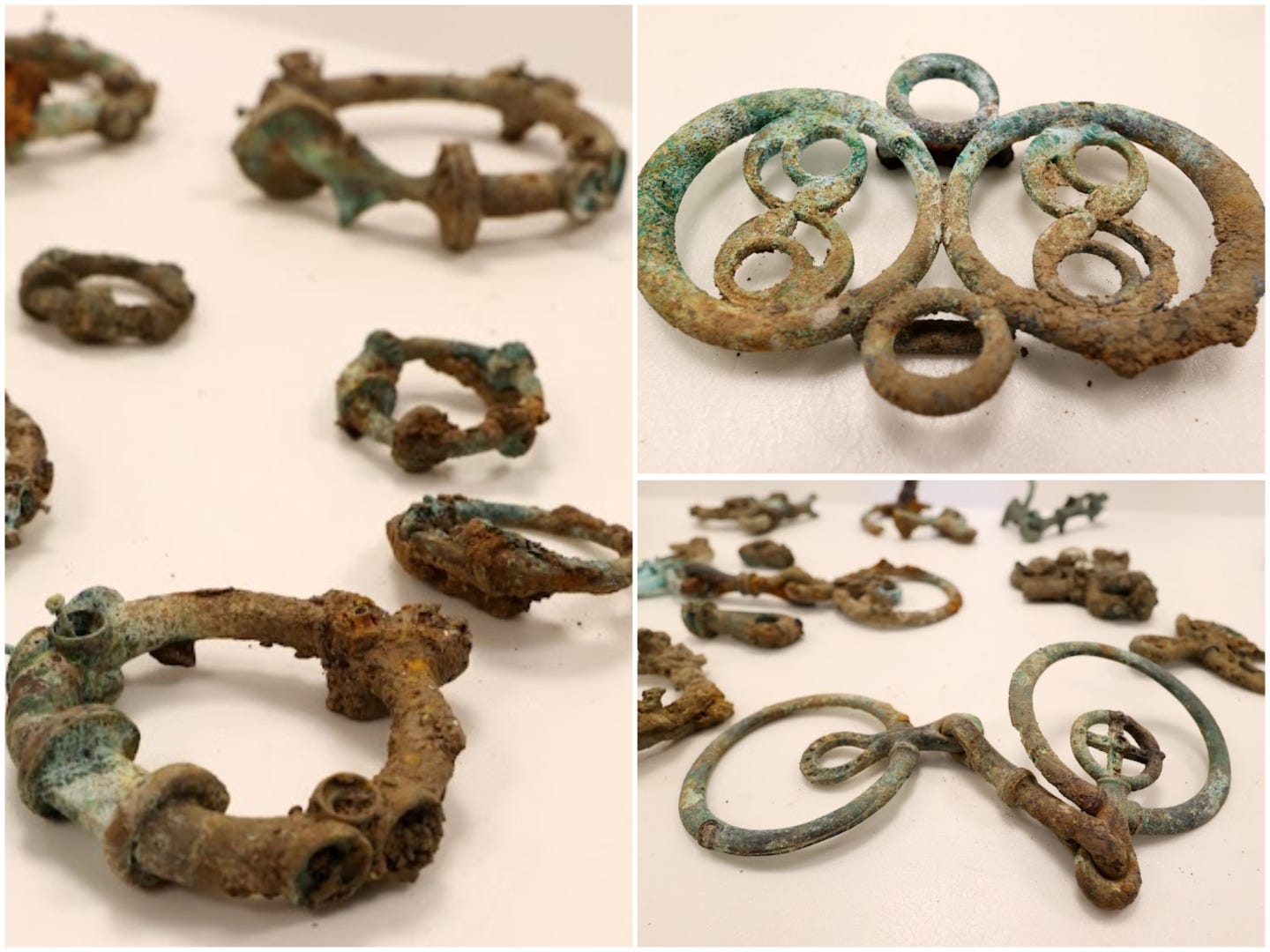
Details of a vast hoard of items which have opened up a window on to Iron Age life and society have been revealed by North East archaeologists.
A team from Durham University, with specialist support from the British Museum, has spent two months meticulously excavating what is one of the largest and most important Iron Age finds ever made in the UK.
Around 800 items buried in two deposits in a field are providing insights into northern Iron Age society, technology, wealth, power and travel.
The dig was led by Professor Tom Moore, head of the University’s Department of Archaeology, after an initial find by metal detectorist Peter Heads near the village of Melsonby in North Yorkshire, eight miles from Darlington.
This was the territory of the Brigantes tribe, who controlled much of northern Britain when the Romans arrived in AD 43.
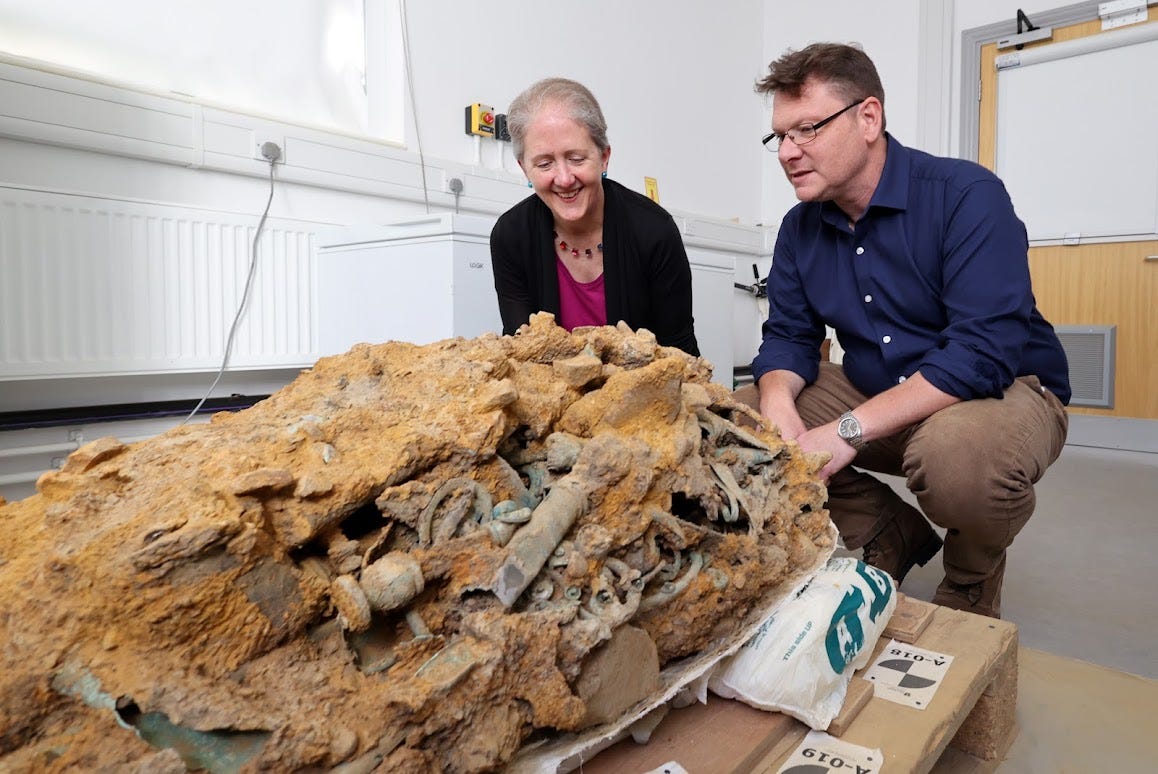
Iron Age specialist Prof Moore was alerted as he has carried out research in the area.
The objects are now at Durham University for stabilisation, recording and conservation.
“The Melsonby Hoard is of a scale and size that is exceptional for Britain and probably even Europe. This is an incredible once in a lifetime archaeological find,” said Prof Moore.
The hoard consists of 28 iron tyres among the partial remains of at least seven four-wheeled wagons and/or two-wheeled chariots.
Also found were elaborate harnesses for at least 14 ponies, ceremonial spears and two ornate cauldrons or vessels - one lidded and likely used as a wine mixing bowl, which had been buried at the bottom of a large ditch.
Some harness pieces are adorned with red Mediterranean coral and coloured glass. which, with bronze would have made a shiny, impressive spectacle.
Prof Moore said: “These are people at the top of society with access to highly expert craftspeople. The waggons would be a new find for Britain. “
The objects date to around 2,000 years ago. Initial assessment suggests they were buried in the first century AD, around the time of the Roman conquest of southern Britain.
For some of the objects, the best parallels are found in continental Europe, indicating long distance connections and shared technology at the time.
Cast copper alloy bridle bits, linchpins, rein rings and harness fittings were also found within the cluster of iron tyres from horse drawn vehicles.
Some of the tyres had been intentionally bent out of shape and the vessels were carefully placed upside down, with one cauldron deliberately holed in its base so they could not be reused.
This suggests they may have been offerings at the funeral of an elite individual.
“People may have come from far around with their valuable items to offer as a tribute,” said Prof Moore.
“There is a perception that wealth and power were concentrated in the south but the destruction of so many high-status objects, evident in this hoard, is also of a scale rarely seen in Iron Age Britain and demonstrates that the elites of northern Britain were just as powerful as their southern counterparts.”
A 1.4m block of earth containing items has been taken to Durham for investigation after a scan showed deposits of spears and pieces of decorated harness for ponies wrapped together in a bundle and placed into a second ditch.
Historic England provided £120,000 grant funding for the excavation project.
Duncan Wilson, chief executive of Historic England, said: “This is one of the most important and exciting Iron Age period discoveries made in the UK. It sheds new light on Iron Age life in the north and Britain, but it also demonstrates connections with Europe.
“Historic England understood the importance of this find from the moment it was reported to us, and we’re thrilled we were able to provide grant support to allow its excavation and initial conservation.
“Any member of the public viewing these new discoveries will feel a real sense of excitement and wonder.”
Dr Sophia Adams, curator, First Millennium European and Roman Conquest period Collections at the British Museum, said: “This is the largest single deposit of horse harness and vehicle parts excavated in Britain. It is significant not just for the quantity of objects buried together but also the quality and range of items.”
Heritage Minister, Sir Chris Bryant said: “The Melsonby Hoard is an extraordinary find, made up of a variety of unique and fascinating objects, which will help us to better understand the fabric of our nation’s history. “




